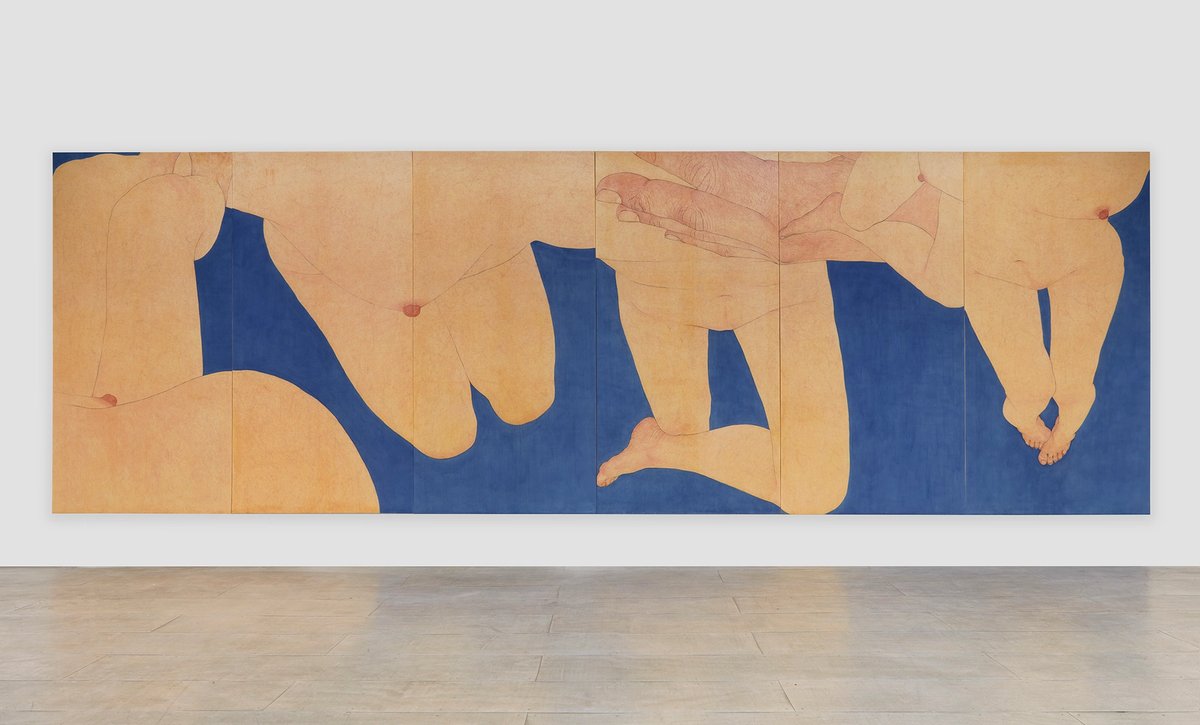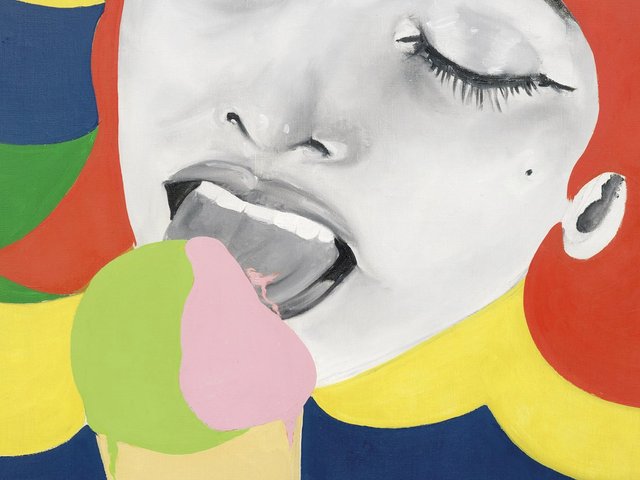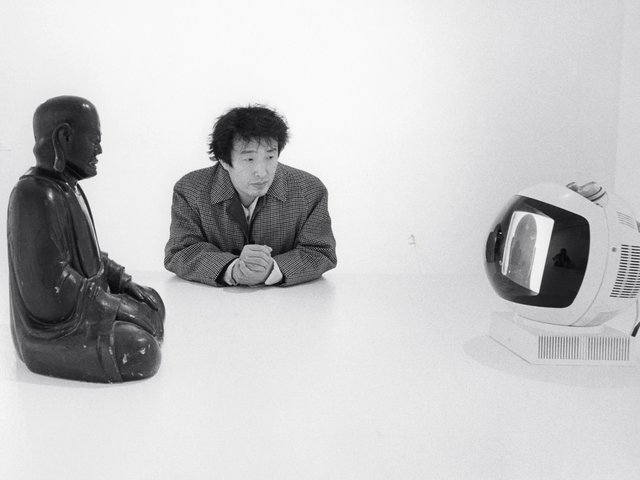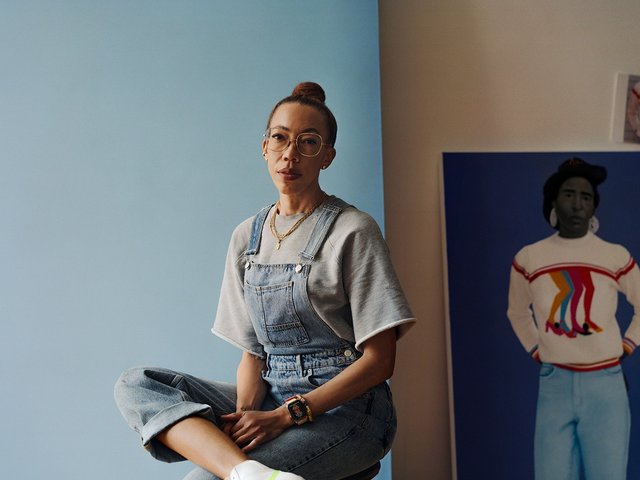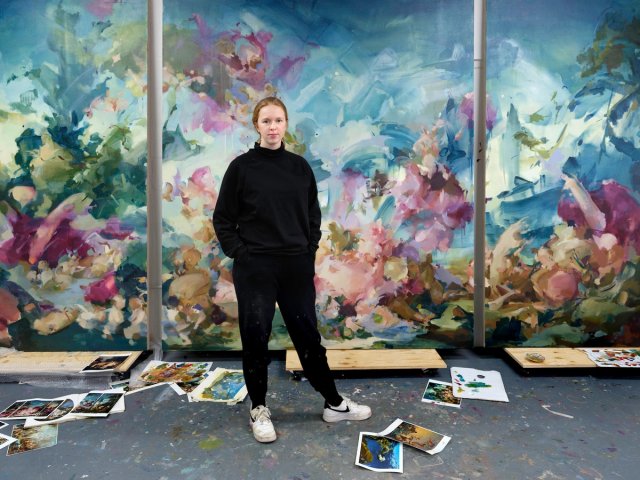On the opening evening of her solo show on the Lower East Side of New York, the painter Seung Ah Paik was surrounded by her husband, children, parents and other family members, some of whom travelled from South Korea for the exhibition. Her show Body Cartography (until 26 April) was inspired by traditional Korean painting techniques and uses her own figure as a map of her experiences, blending landscape and self-portraiture.
“By just reflecting all these details of my body, I want [viewers] to embark on their own journey through their bodies, related to their own personal histories,” Paik tells The Art Newspaper. Paik’s own journey to her first show in New York, at Gratin gallery, has not followed the traditional artist’s roadmap—she is back exhibiting new work after taking a years-long break from painting professionally.
Paik majored in Oriental painting at Seoul National University in South Korea, and studied techniques first used in portraiture from the Joseon Dynasty (1392-1897). The installation of Neo-Confucianism as the state religion during this time heavily influenced portraits of the era, and it was believed that an artist could portray a sitter’s character by the intricate depiction of their skin, Paik explains.
“They usually used it only for the face, but I decided to use it for my body,” she says. “I’ve never seen my face myself with my own eyes. The parts I’ve seen the most, the most familiar parts, are actually my body. So when I wanted to make a self-portrait, I decided to take images from my body and put them together from my own perspective, from different angles.”
Paik’s paintings in the show reveal details of the human body that are often neglected in portraiture—the creases of knuckles, blue veins running beneath the skin and shifting pigments on nipples, hands and feet. The results in Body Cartography are large, lifelike and intimate self-portraits, with deep jewel-tone backgrounds. One of the most impressive works in the show by sheer scale is Map: Azure Blue (2025), a set of six panels that stretches more than nine meters wide and three meters tall, showing Paik’s feet, legs, belly, breasts and hands from her point of view. The works in Body Cartography are priced from $15,000 to $100,000 each.
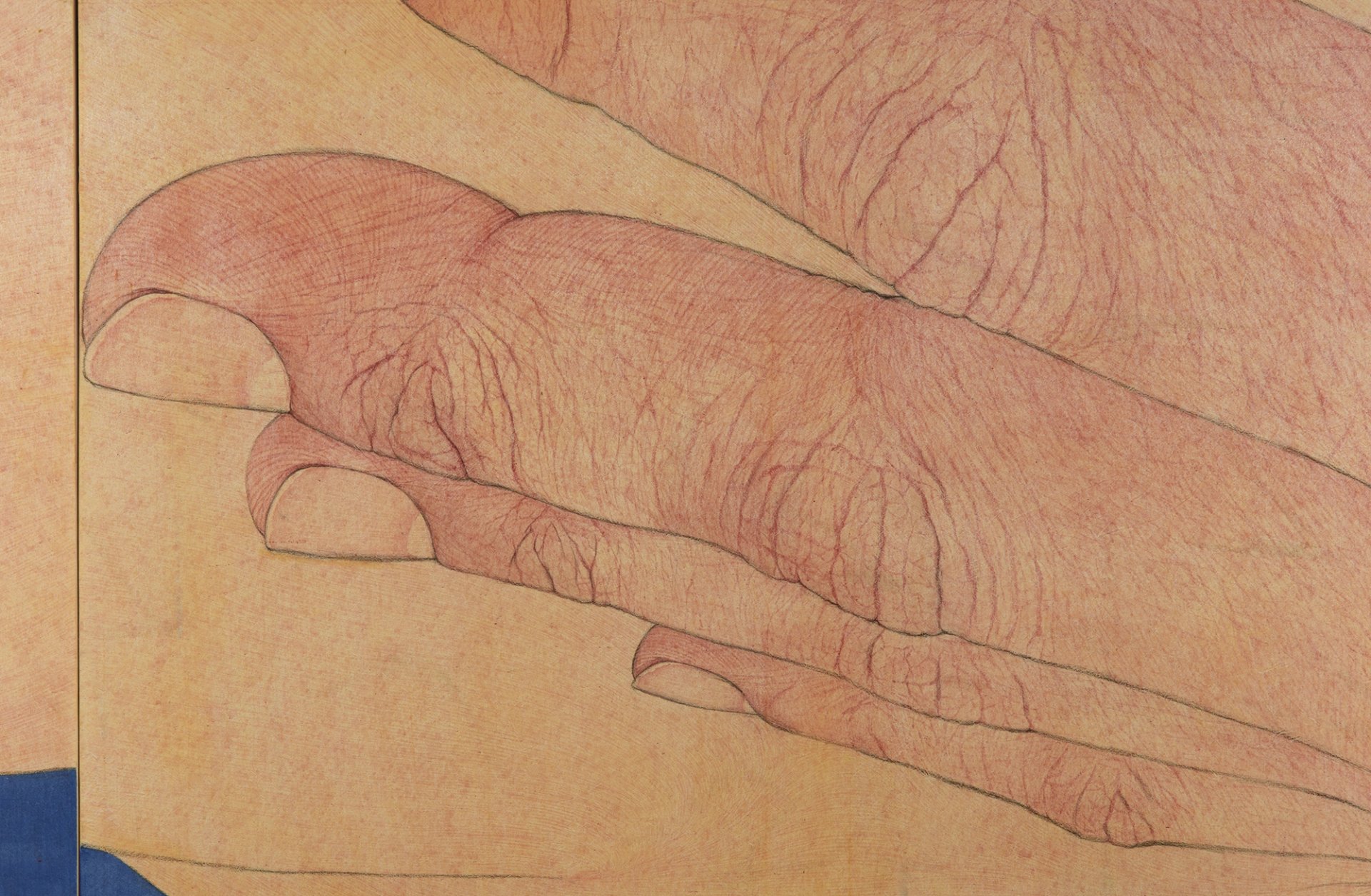
A detail from one of Paik's paintings in Body Cartography. Courtesy Gratin
Before her break, Paik took part in buzzy solo and group shows in London after graduating with an MFA from Goldsmiths in 2012, including Saatchi Gallery’s 2016 Champagne Life, staged to mark the gallery’s 30th anniversary. She married an American artist she met at Goldsmiths and moved to the US, where she “settled down, had kids, and started a new business to [support] our new family more steadily”, she says. For several years, Paik took a break from creating art, and she says that during that time she was filled with anxiety and doubt about whether she would ever paint again.
In 2022 she began working with Tetto, a platform for contemporary art in South Korea, on shows in Seoul. She says she was “overjoyed” at the opportunity, adding that returning to painting felt like rediscovering herself.
Since taking a break and having children, the composition of her paintings has shifted. “What I draw has not changed very much, but the colour, the gestures and my body shape after having my kids has changed a lot,” she says. “When I pick body parts, I have a habit of showing only what I want to show. It does look a little different here and there.”
Two new paintings by Paik are also included in Bortolami Gallery’s stand at Art Basel Hong Kong (until 30 March). Last year, she was contacted by Talal Abillama and Tarek Haraoui from Gratin, who found her work while perusing the Saatchi Gallery archives.
“I never saw something like that in my life,” Abillama said on the night of the show’s opening last week, held at Gratin’s space at 291 Grand Street. “Something about them just draws you in, and you get obsessed with these images. Even the details, you see how it's delicate and precious, and you want to protect it. But even more than that, I realised the work speaks to so many people. When I saw it for the first time, I knew right away that’s something I really want to work with.”
Paik adds: “When I was offered the chance to exhibit in New York, it felt like a reward for those restless years."
- Seung Ah Paik: Body Cartography, until 26 April, Gratin, New York


